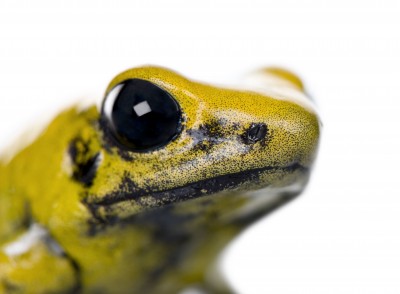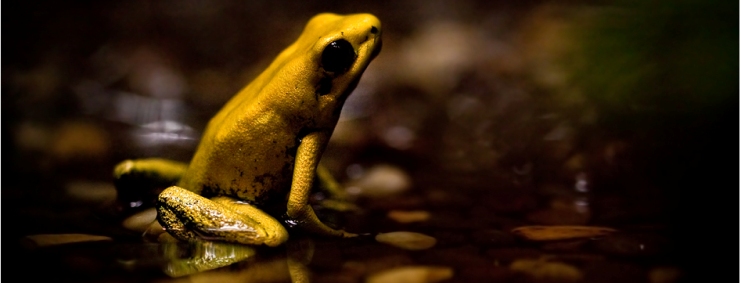Classification
Domain- Eukarya
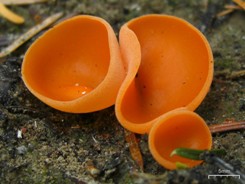
All members of the Eukarya are unique from bacteria and
archaebacteria in that they contain membrane-bound organelles and a
nucleus.
(Protists,
Fungi, Plants, Animals)
Kingdom- Animalia
All animals are multi-cellular and heterotrophic.
(starfish, insects, worms)
Phylum- Chordata
Possess a notochord sometime throughout
develop, have a thyroid gland, pharyngeal gill slits, post-anal
tail.
thyroid gland, pharyngeal gill slits, post-anal
tail.
(Orangutan, Fish, Frogs)
Class- Amphibia
Live on land but breed in water, ectothermic
meaning they are cold-blooded tetrapods. (Salamanders, Newts, Toads)
Order-Anura
Tailless amphibians that are comprised of the frogs
and toads
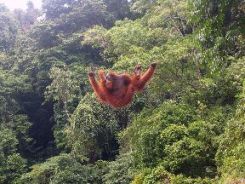
(Frogs and Toads)
Family- Dendrobatidea
The brightest colored Anuran group that is comprised
of all of the poison dart frogs. These frogs secrete very potent toxins
and
live in Central America and South America.
(The
Black-legged Dart Frog, Strawberry Poison Frog, Blue Poison Frog,
Lehmann’s Poison Frog.)
Genus- Phyllobates
There is a presence of batrachotoxins and they are all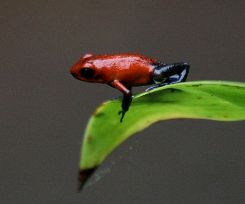 native to
South America. They are the only type of poison dart frog used by South American
Indian tribes and contain the most poisonous frog in terribilis.
native to
South America. They are the only type of poison dart frog used by South American
Indian tribes and contain the most poisonous frog in terribilis.
(Phyllobates bicolor, Phyllobates vittatus)
Species- Phyllobates terribilis
The most toxic species of frog with a mint-green to a yellow skin
color.
Meaning of Phyllobates terribilis in English- Terrible Tree
Climber. This is odd however because they are almost always found on
the ground, unafraid of potential predators.
Top 4 photos from public domain
The Phyllobates terribilis got the name “Golden Poison Frog”
because of two reasons
A) A large majority of the species has a
golden-yellow color and,
B) The frogs are within the Phyllobates
genus, which are the only types of frogs used by native South
American tribes for the poison darts.
The top phylogenetic tree is drawn to show the molecular similarities between four genus of poison dart frogs. Three mitochondrial genomes were sequenced including cytochrome b, 16s rRNA, and 12s rRNA. From the data that the scientists received they were able to make the phylogenetic tree to show evolutionary relationships within all species. The numbers at the base of each divergence represent bootstrap values from 100 bootstrap replicates. Also between the four genera we see changes in toxin. Epipedobates developed a histrionicotoxin, Dendrobates developed a indolizidine, and Phyllobates developed a Batrachotoxin. All of these factors help to understand what is really going on within the picture.
The bottom phylogenetic tree is used to determine what types of frogs found in the Colombian rainforest belonged to what species. The main problem for scientists was that they were unsure which frogs they were finding south of Buenaventura, an area in Colombia. They captured several of the frogs from this region and collected tissue samples orally. They did DNA tests to figure out which species were which. The test being run was a molecular test for the 5' fragment of the (COI) mitochondrial gene. From the tests they figured that the frogs belonging to Boca Yurumanguí and Río Nuya belonged to terribilis. This in turn helped them to establish where all of the frogs could be found to help with the conservation status of Phyllobates terribilis.

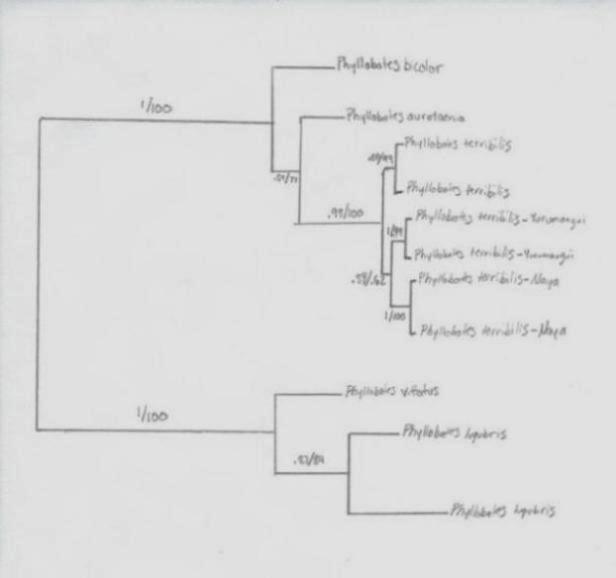
Top tree courtesy of M. Clough and K. Summers
Bottom tree courtesy of Acta Herpetologica
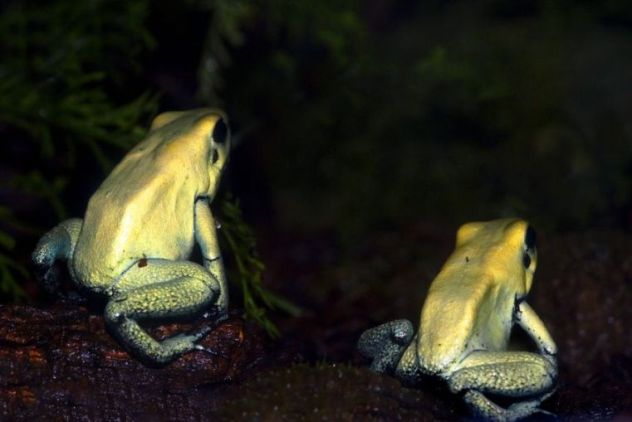
Photo courtesy of Andre Mueller
To visit the Habitat page click here
For main page click here
